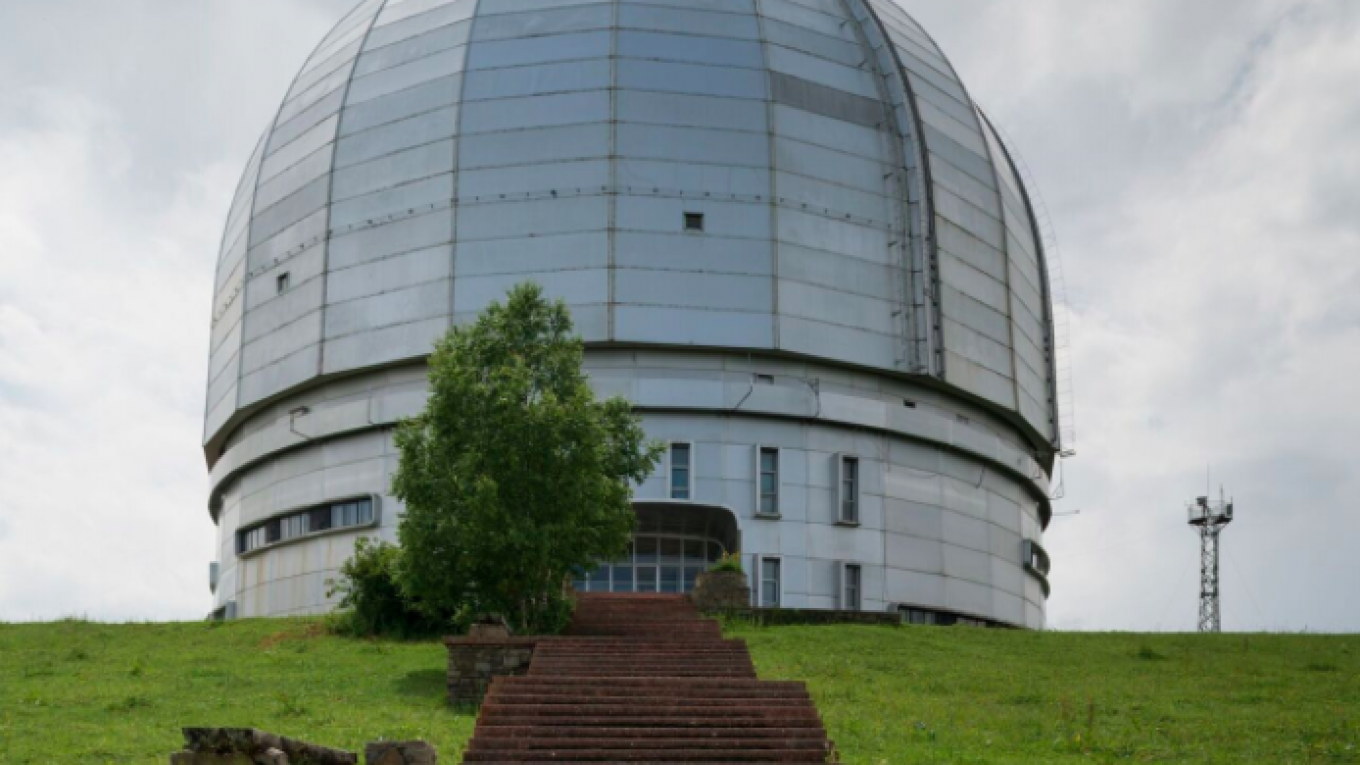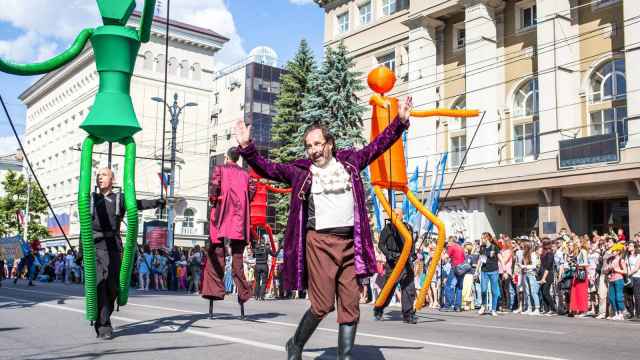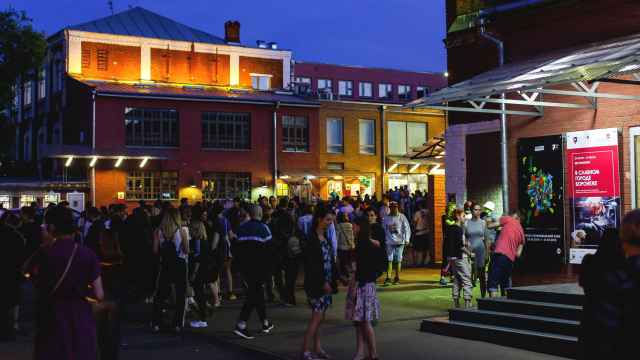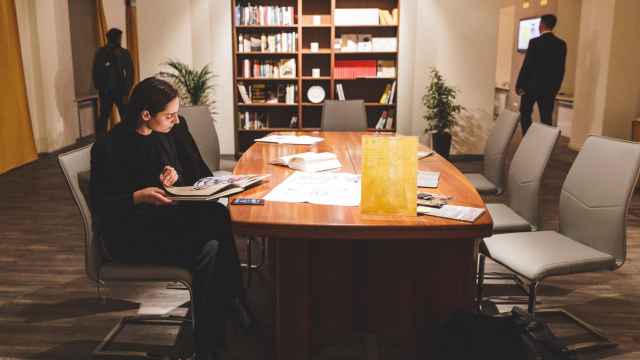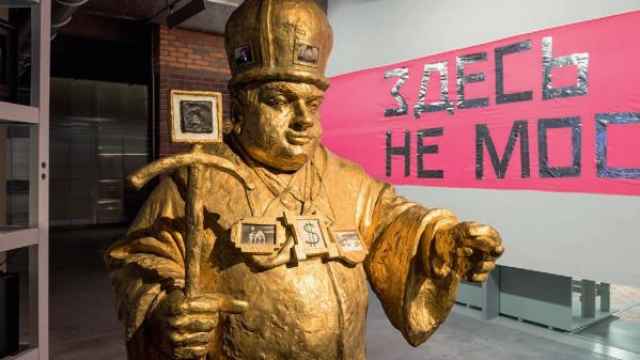Fifty years ago a remote observatory perched high in the mountains of the North Caucasus began to study the most distant history of the universe. It was symbol of the Soviet Union’s desire to master the mysteries of space.
To mark this anniversary, the closed community of scientists who work there have opened their doors to a unique art project in which a group of Russian and Austrian artists examine celestial questions through their own eyes. It’s an unlikely collaboration, but for the parties involved, not an inexplicable one.
“There are many similarities between artists and scientists. They are both researching something which is yet unknown,” said Yury Balega, the scientific director of the observatory, at the opening of the exhibition in October.
The ambitious project with the deceptively simple title of “The Observatory,” encouraged artists to draw inspiration from the natural beauty of the region, its historical and cultural past, and its significance as a scientific research center. The experiment resulted in a number of installations and artworks both within the “nauchny gorodok” (science village) and the observatory itself.
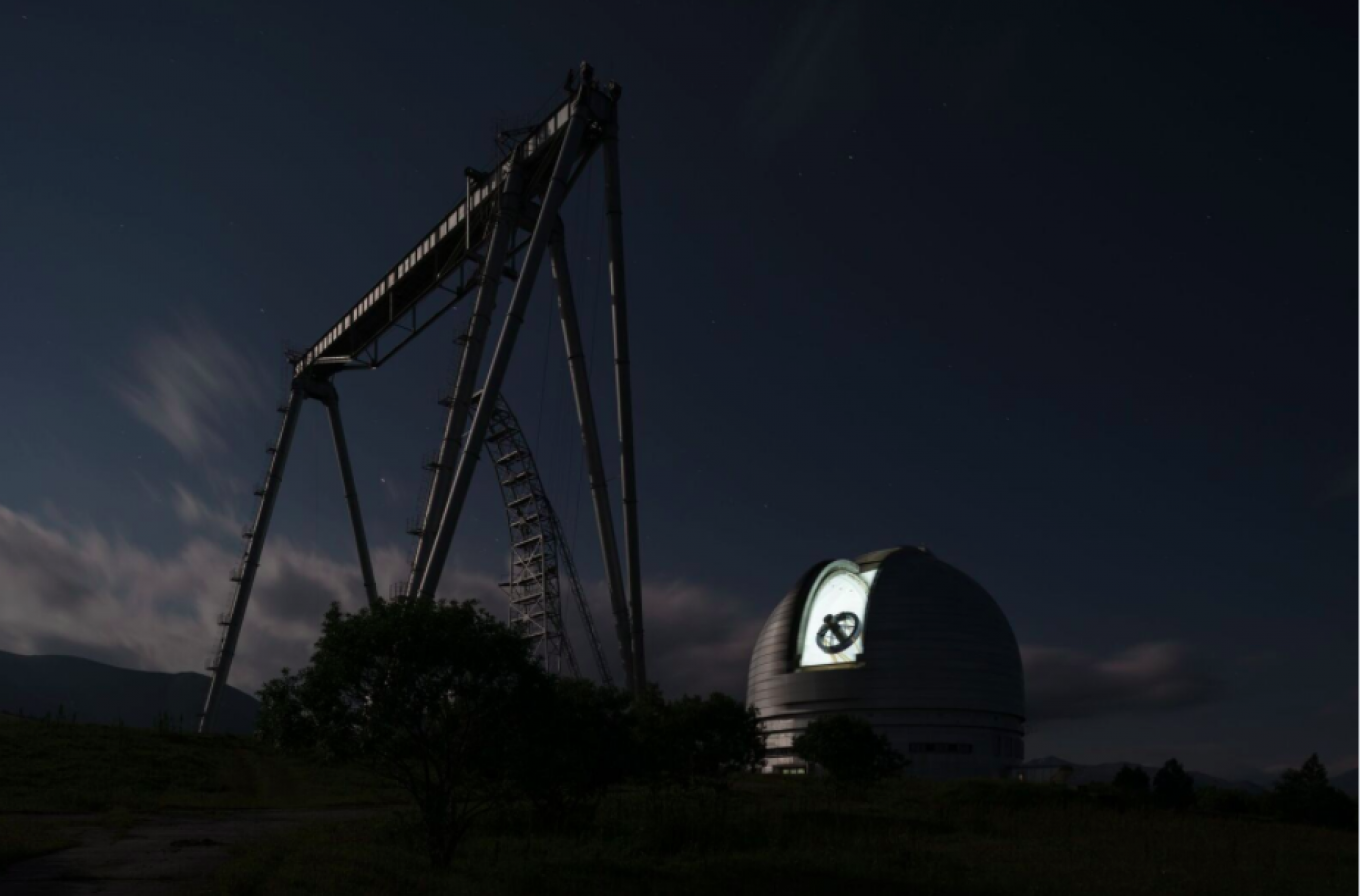
A Unique Location
The project is the result of a collaboration between Simon Mraz, the director of the Austrian cultural forum, and twin sisters Mariana Guber-Gogova and Madina Gogova, director of the Gogova art foundation and culture minister of the Karachay-Cherkess Republic respectively.
Mraz is no stranger to creating art projects that interact with their surroundings in unique and unexpected ways. In 2013 he spearheaded the transformation of the old nuclear-powered Lenin icebreaker, stationed in the far northern city of Murmansk, into an exhibition space for contemporary art. He went on to curate a project at Moscow's Trekhgornaya Manufaktura in which artists from Russia and abroad created artwork inspired by Russia’s former industrial cities.
Mraz saw equal potential in the observatory, which became a hub for the scientific elite during the Soviet Union. “It’s something very special. The observatory was created out of Soviet ambition — here there was a whole generation of people who created their own little world,” he said in an interview with The Moscow Times.
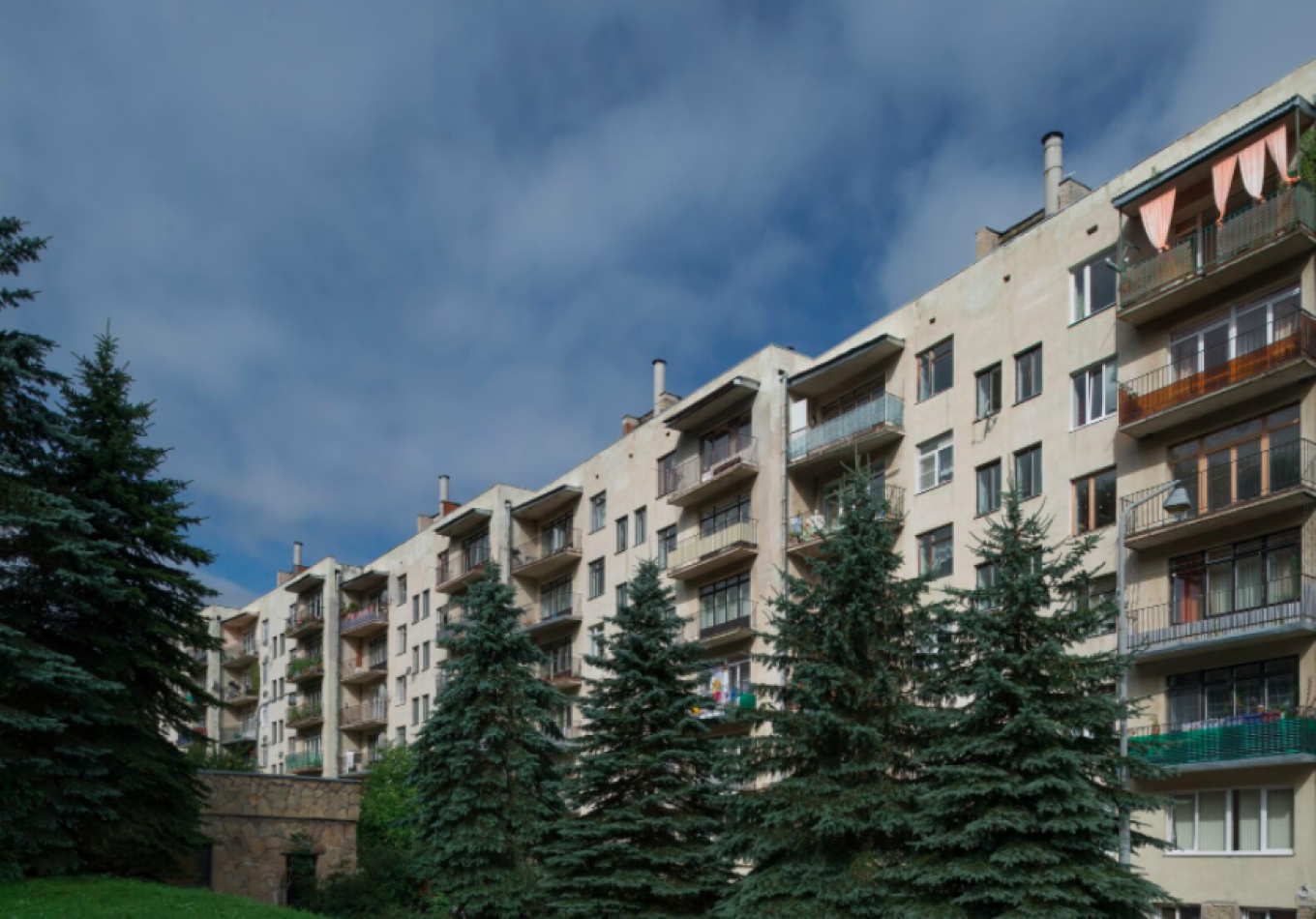
The observatory was first dreamed up in the early days of the Soviet Union, but only became functional in 1966. It was the fruit of Russia’s ambitious goal to build the world’s biggest observatory. Today around 1,000 inhabitants still remain in the accompanying science village, despite the region in general suffering from economic migration. A self-sufficient community, the science village boasts its own post office, school, housing and, of course, laboratories.
The observatory itself lies at an altitude of over 2,000 meters and houses what was once the largest single primary mirror telescope in the world. Six meters in diameter, the BTA-6 is capable of studying processes which took place 14 billion years ago — the light from those processes having only now “traveled” through space close enough to be seen.
Yury Palmin, one of Russia’s leading architectural photographers and a participant in the project, was inspired by the interesting juxtaposition between the observatory and the science village. He photographed the stark, concrete structures in which the scientists live and work and exhibited them in a former grocery store.
“I wanted to make a short circuit of a place with itself. The local people are working with objects that are billions of lightyears away from us, and I wanted to correct a sort of astronomic farsightedness. I tried to draw their attention to something which is very close to them,” said Palmin.
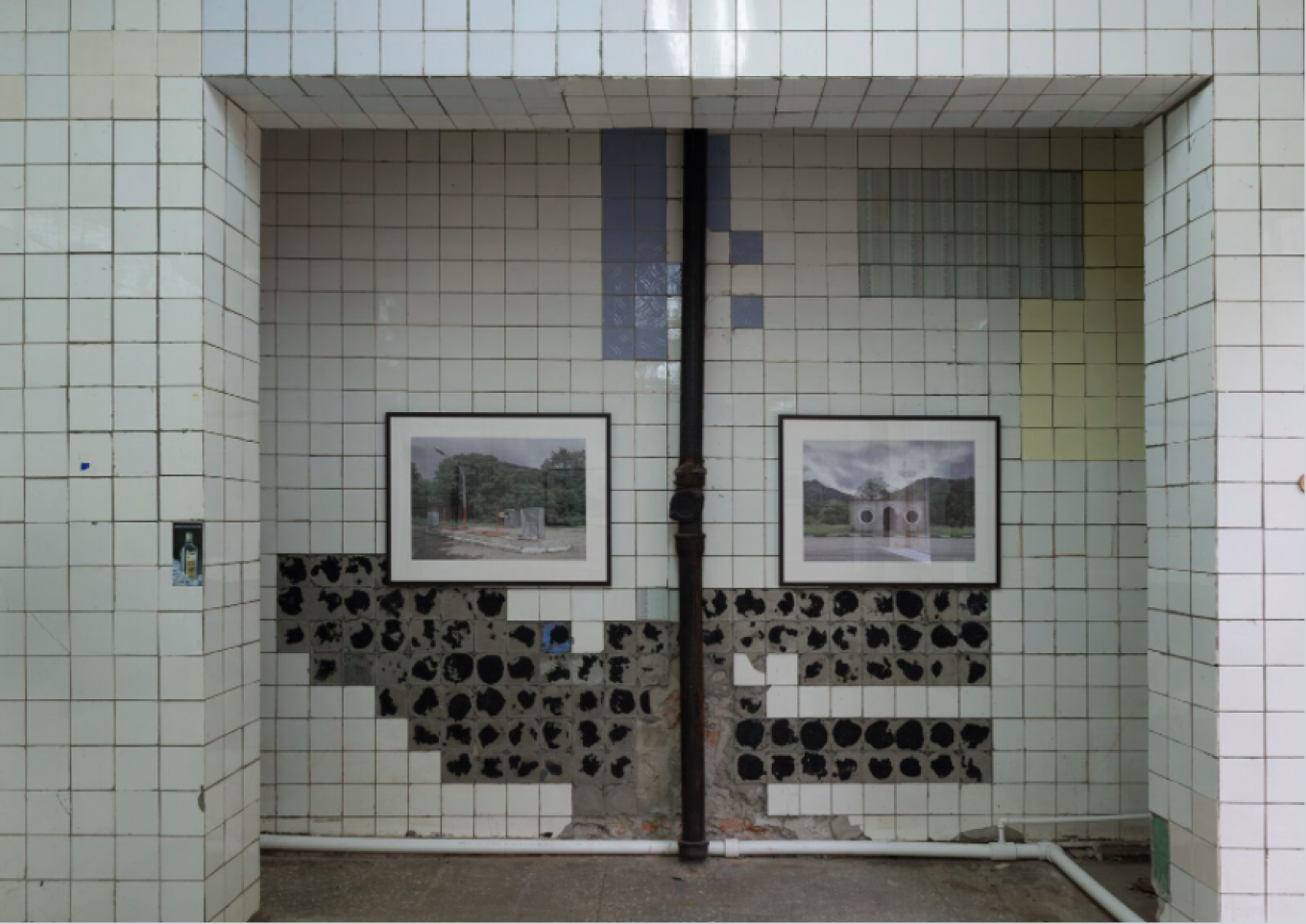
Exploring Time and Space
The small group of artists from Russia and Austria were invited to spend time in the scientific community earlier this year to gather inspiration for their artwork.
It was not only the observatory, but also the surrounding layers of cultural history which shaped their responses. Over 1,000 years ago the mountains of the North Caucasus were home to settlements of the Alans, a Scythian people who converted to Christianity. The area boasts a settlement of ancient Orthodox churches, one of which houses a work by Russian artist Alexandra Paperno, “Abolished Constellations.”
Fifty one painted wooden panels are suspended from the walls and ceiling within the stone church, offering a glimpse of the night sky. “In 1922 there was an international conference for astronomers, and this was when the final list of 88 constellations was made. I found out that 51 constellations were abolished at that time,” said Paperno.
To create the work, which is focused on the far reaches of space but exhibited in a church, Paperno painstakingly studied the Webster guide of constellations and mapped the coordinates of each star to its precise location.
Other works are more playful, such as Svetlana Shuvayeva’s “A Thousand Trifles.” The installation is situated within what was intended to be a planetarium for tourists, but which never served its original purpose. At a first glance, you seem to enter an empty room with whitewashed walls. Look closer and you see the door is made of paper, as is a cell phone charging on the floor. As your eyes move to the window you notice the cars facing you bear matching license plates. Shuvayeva compared the spectator's search for meaning in the artwork to an astronomer examining the abyss with a telescope.
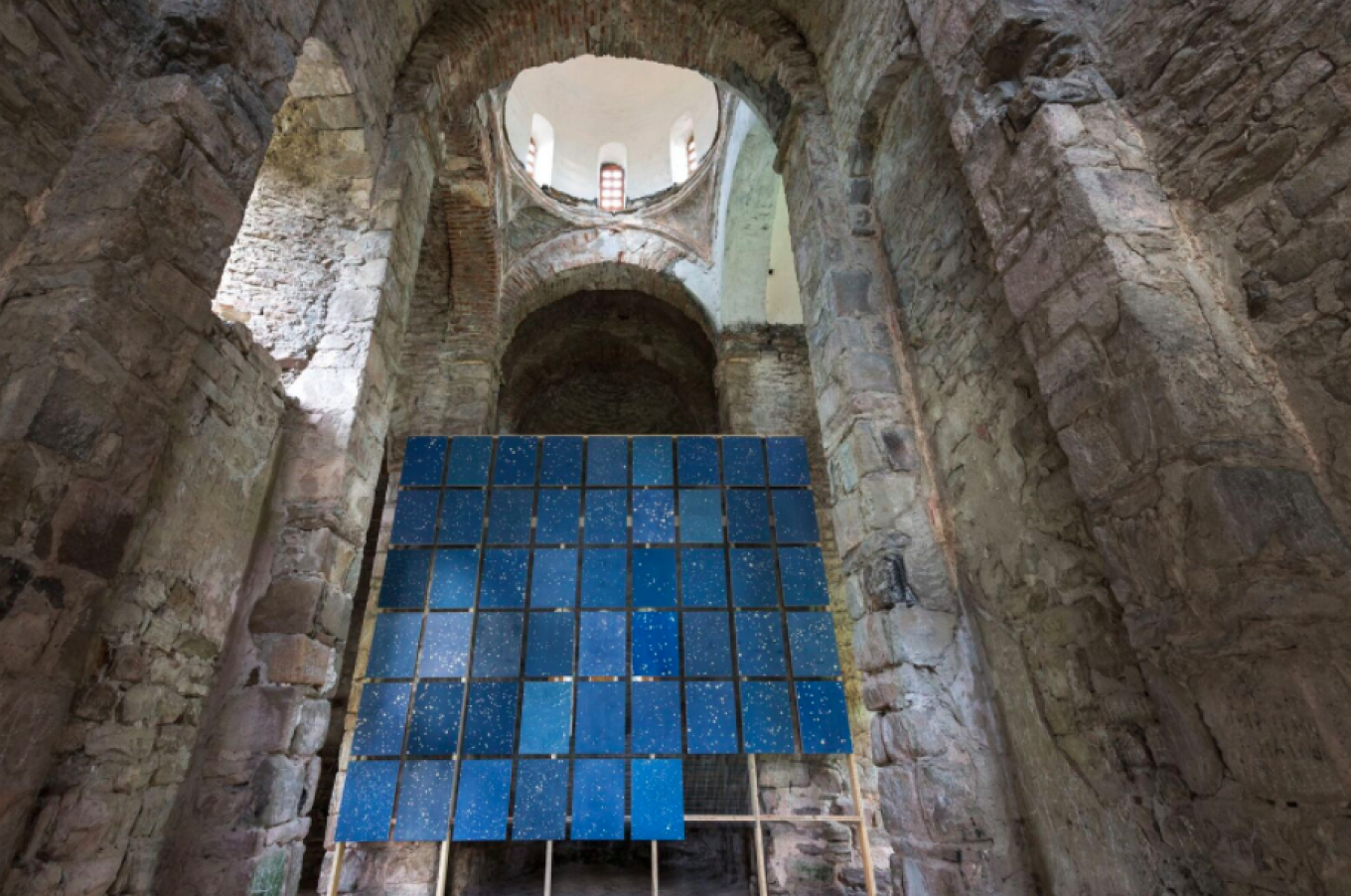
The Modern Condition
Michail Michailov, an artist based in Vienna, created “M-Theory,” a multimedia installation, where a video of Michailov performing a traditional local dance is projected onto a drawing of "dust" in colored pencil. Michailov's intricately drawn “dust” appears entirely realistic — so realistic in fact that it was almost destroyed by accident when one of the observatory workers mistook it for the real thing.
“M-Theory,” which is located in the old telescope control room, responds to the vast reaches of the universe by drawing on the individual human experience of the world. “It’s about where we come from and where we are going to,” explained Michailov. “I wanted to reclaim the confusing concept of M-Theory by making my art a play on words — my name is Michail and this is my very own ‘M-Theory.'"
The conundrum of our modern existence was echoed by Balega, who lives firmly in the world of reason, facts and science. “We have our vision of the world. We have laws and mathematics, but maybe the world is much more complicated and we cannot understand it.”
But perhaps part of our human condition is this desire to make sense of the world around us. As Emil Brix, the Austrian ambassador in Russia, said: “There is knowledge created by science and there is knowledge created by art." The Observatory offers both.
A Message from The Moscow Times:
Dear readers,
We are facing unprecedented challenges. Russia's Prosecutor General's Office has designated The Moscow Times as an "undesirable" organization, criminalizing our work and putting our staff at risk of prosecution. This follows our earlier unjust labeling as a "foreign agent."
These actions are direct attempts to silence independent journalism in Russia. The authorities claim our work "discredits the decisions of the Russian leadership." We see things differently: we strive to provide accurate, unbiased reporting on Russia.
We, the journalists of The Moscow Times, refuse to be silenced. But to continue our work, we need your help.
Your support, no matter how small, makes a world of difference. If you can, please support us monthly starting from just $2. It's quick to set up, and every contribution makes a significant impact.
By supporting The Moscow Times, you're defending open, independent journalism in the face of repression. Thank you for standing with us.
Remind me later.


